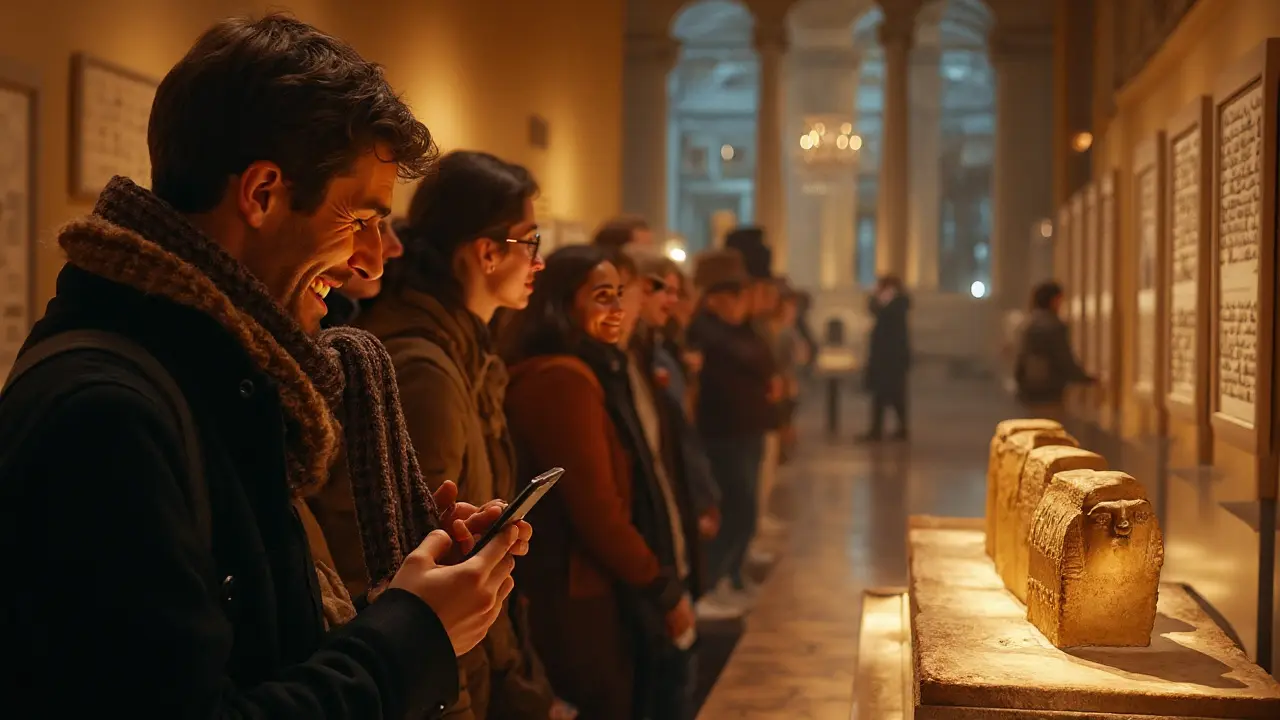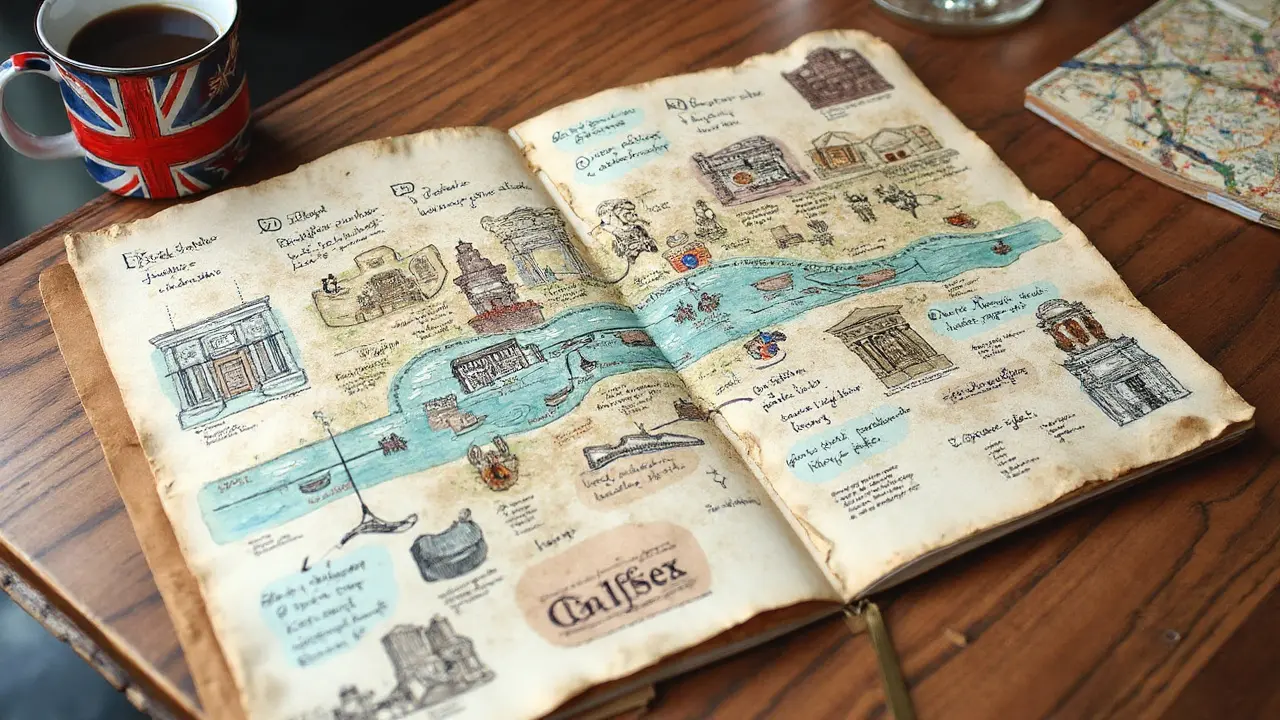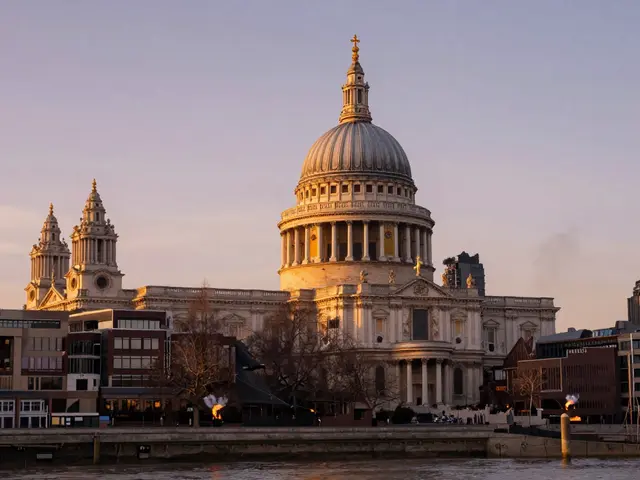Standing on Great Russell Street, the British Museum is that rare London landmark that’s crammed with stories, drama, controversies, and—frankly—more artefacts than any one person could hope to see in a single visit. If you ask anyone who’s lived in London for any stretch of time, they’ll tell you: it’s more than just a rainy-day backup plan. It’s where locals take their visiting parents, expats send a photo home to prove they’re “doing London right,” and students eke out essays with an hour before closing time.
There’s nothing quite like stepping in and being hit with that blend of ancient stone, hushed voices, and the realization that some of the world’s most iconic objects are just a few steps away—and free on entry, which frankly isn’t something you hear often in the capital.
Everything You Need to Know Before You Walk In
Londoners will tell you there are unwritten rules to visiting the British Museum. For starters: never try to blitz the whole place in one go—unless you’re aiming to have your eyes glaze over before you reach Ancient Greece. The museum is split across several galleries, covering civilisations from across every corner of the globe, with over eight million items in the collection. Even if you stick to the publicly displayed objects, you’re still facing around 80,000 artefacts, spread over 92 different rooms. It spans everything from mummies and samurai swords, to Lewis chessmen and the Rosetta Stone. The truth: this isn’t something you ‘tick off’ on an afternoon stroll between Soho coffee stops.
Timing is everything here. If you’re local or spending more than a week in the city, come first thing during a weekday term time—especially after 10 AM when the school groups have moved on, or just after the lunch rush. Saturdays are, without a doubt, packed. You’ll know you’re hitting peak tourist season (summer holidays or even rainy November afternoons) when the security queue stretches past Pret on the corner. But don’t let that put you off; the museum's systems—digital guides, cloakrooms, plenty of benches—are geared up for heavy crowds. If you’ve got little ones, be aware there’s a family trail and activity backpacks—they’ll keep even jaded kids busy while you sneak off to marvel at ancient Egyptian gods. Hungry? The court café is fine for a quick sandwich, but honestly, locals nip out to Store Street Espresso or grab a sausage roll from Gail’s.
Here’s a fun tidbit you probably didn’t know: for decades, museum staff played five-a-side football in the central courtyard, now home to the vast, glass-roofed Great Court designed by Norman Foster. The iconic atrium is almost a sight in itself—don’t miss snapping a panoramic photo under that stunning glass canopy. There are also regularly rotating exhibitions, most requiring tickets, and the museum often hosts late-night events, films, or lectures. Check the schedule before you visit; nothing says ‘London savvy’ like feigning casual interest in an Assyrian Empire talk while clutching a gin and tonic from the makeshift bar.
If you’re from the city, it’s likely you’ll spot the international crowd. Tourists from Paris, Rome, New York, and Tokyo all angle for the same photo spots—particularly the infamous Elgin Marbles. There’s a running joke that the Parthenon Sculptures have found a more reliable climate in London than they ever had in Athens. The museum’s connection with colonial history isn’t brushed under the rug. Visitors will see bold curatorial notes on provenance, contentious artefacts, and debates around returning objects—notably the Benin Bronzes and the Rosetta Stone. Locals like to show off this earnestness to friends from abroad, especially if you’re up for a good pub argument later about who really owns what.
The British Museum isn’t just about objects, though it does have plenty. It’s also deeply woven into city life. During certain half-term holidays you’ll see art students sketching statues in the Greek galleries, meanwhile grandparents bring grandchildren to look for the mummified cat. If you want to blend in, grab a museum map—digital or paper, both are free at the entrance. Insider tip: skip the obvious loop and duck into quieter sections (think: Islamic World gallery, the Enlightenment Room, or the quirky clocks and watches). If the crowds around the Sutton Hoo helmet get too intense, sneak off to the less trafficked Assyrian wall panels, which are both jaw-dropping and oddly meditative.
Being smack in Bloomsbury has perks. You’re a stone’s throw from UCL and minutes from Tottenham Court Road, but just far enough from the West End’s chaos to feel, for an afternoon, that you’ve escaped the city rush. Make the most of your visit with a side quest—pop to a bookshop on Gower Street, gaze at the blue plaques marking Virginia Woolf and other Bloomsbury Set members, or duck into a Georgian pub. There’s something satisfying about ending your day with both ancient coins rattling around your head and a pint of Camden Hells in your hand.

What Not to Miss: Highlights, Quirks, and Local Secrets
Trying to see everything at the British Museum is a fool’s errand. Most locals have their top three and return regularly to ‘catch up’ with personal favourites. Of course, the heavy-hitters are famous for a reason. The Rosetta Stone is probably the most visited object in the entire place. When it’s tourist season, snapping a quick selfie with this ancient slab of granite is almost as expected as posing with the lions in Trafalgar Square. The Egyptian mummies draw a crowd nearly all year round—odd, since many Londoners consider wandering past multiple preserved corpses almost mundane. There’s Polite Society London for you: unfazed by corpses, phased by tube delays.
If there’s one surprise twist for regulars, it’s how often the museum’s highlights shift simply due to what’s on loan. As of last month, the Roman Britain exhibit featured the jaw-dropping Hoxne Hoard—a treasure chest of over 15,000 Roman coins unearthed in Suffolk (they had to use a metal detector, classic rural England story). Don’t sleep on the Anglo-Saxon Room, especially if you want to get a feel for the tangled history that shaped, well, half the street names round London. And it’s only in this city you’ll hear someone refer to the Lewis Chessmen as “those weird viking pieces from the Harry Potter movie”—a very London pop culture moment.
But honestly, the best way to make your visit unique is to hunt for the quirks. Tucked into the clock section, you’ll find the most eccentric timepieces, like the enormous Stackfreed—an early attempt at portable watches that, unsurprisingly, never really caught on. Then there’s the well-known ‘enlightenment’ space—basically a cabinet of curiosities stuffed with objects collected by 18th-century aristocrats with more money than sense. There’s a tailor’s dummy in the form of a leg, 3,000-year-old fudge-like Egyptian bread, and even a mechanical galleon that once spurted wine. Don’t try to drink it now—you’ll be swiftly escorted out by polite but firm security staff.
If you care for stats, get this: the museum boasts over 150 million annual visitors, pre-pandemic levels, allegedly making it the most popular indoor destination in London. Yes, even ahead of Madame Tussauds and the Natural History Museum. This chart breaks down the latest visitor figures by major London museums, giving you a sense of just how busy the British Museum gets compared to its neighbours.
| Museum | Annual Visitors (2024) |
|---|---|
| British Museum | 6.7 million |
| Tate Modern | 5.3 million |
| Natural History Museum | 4.9 million |
| V&A | 3.4 million |
Not a numbers person? Fine, let’s talk hidden perks. Grab the limited-edition guides from the gift shop, which always beat the generic souvenirs hawked in Leicester Square. Or explore temporary exhibitions: recent ones included a deep-dive into Manga culture (complete with workshops), and interactive VR experiences letting you walk inside the Parthenon. Some “pay what you can” tours are run by the museum and outside guides—book ahead. On most Fridays, late openings run until 8:30 PM, and you’ll find a totally different crowd. It’s when busy Londoners come for culture to wind down their week, and a glass of Chablis isn't out of place.
One overlooked angle: the museum’s local partnerships. It works with UK schools, runs events with UEA’s archaeological teams, and you might even spot collaborations with London fashion week—last spring, a pop-up runway showcased modern takes on ancient textile motifs, right in the Egyptian gallery.
If you love people-watching, the Great Court is the city’s best spot: tourists in awe, couples having heated debates over whether the bust of Nefertiti would fit their flat, and school kids multiplying in size and volume by the minute. There’s always a new angle to discover—like the time a rogue pigeon wandered inside (only in London), or the ‘after hours’ DJ sets that transform granite columns into eclectic, neon stage props. It’s all part of the city’s evolving culture—a mashup of old and brand new, as you’d expect in the heart of the capital.
And let’s be pragmatic: for Londoners, sometimes the museum is just the best place to shelter from a relentless downpour. Unlike most cafes, nobody rushes you out. You can lose yourself looking for Mayan lintels, or simply sit and watch the crowds swirl by. It doesn’t matter if you’re here for the academia, the Instagram likes, or just killing time between meetings on the Central line—the British Museum will meet you where you are.

Making the Most of Your Visit: Smart Strategies and Homegrown Wisdom
If you want to make a real day of it, a little forward planning pays off. Start by checking the official mobile app or the museum’s own website—daily highlights tours, gallery closures, live talks, and new acquisitions are all regularly updated. You don’t need to book tickets for the main collection, but timed tickets are recommended during holidays or for blockbuster exhibitions. Security is predictable—think bag scanners like at city airports, but friendlier. Don’t bother lugging heavy backpacks unless you plan to use the cloakroom (expect to pay a small fee, cashless only, very 2025).
Locals know not all rooms are created equal. If you’re after crowd-free serenity, hit the Japanese galleries or the Africa section after 4 PM. For family outings, time your visit for morning workshops—usually run by enthusiastic volunteers who know how to handle rowdy school groups. And if you’re visiting solo, try the “object spotlight” talks held at different points each afternoon. You’ll get under-the-surface details—a Roman ceramicist’s daily struggles, the story behind a cursed Assyrian relief—that aren’t printed anywhere else.
Want food options beyond the museum café? Everyone who works nearby sneaks out to Brunswick Centre for Honest Burgers or Ole & Steen, or hikes up to Lamb’s Conduit Street for killer coffee at Knockbox. If classic tea is your thing, the museum’s own café does a very British cream tea, but be prepared for queues on weekends. For something smarter, reserve a table at The Great Court Restaurant—yes, it’s touristy, but the view’s unbeatable, and the beef Wellington is a nod to old-school British fare done right.
If you’re relying on public transport, Tottenham Court Road, Holborn, or Russell Square tubes are all viable—just watch out for those Saturday “planned engineering works” on the Central line, as London loves a last-minute tube drama. For cyclists, there’s a handy row of Santander Cycles stands steps from the main entrance, and parking your own bike is pretty safe around the Bloomsbury campus. Don’t drive unless you have nerves of steel—traffic and extortionate parking charges make public transport the obvious choice.
Picking up souvenirs or books? The British Museum shop is a treat, with a genuinely brilliant book selection—history buffs will find specialist texts you’d struggle to spot elsewhere, while design geeks get lost among gorgeous prints and clever London-inspired gifts. The postcards alone are reason to linger. If you’re into crafts, look out for weekend pottery or calligraphy classes—sometimes hidden away in the basement education rooms, but easily booked online.
Now for something truly local: join the British Museum Friends scheme if you plan to be a repeat visitor. Members get early access to exhibitions, discounts in the bookshop, and those ever-coveted invites to openings or late-night events. In a city packed with transient pop-ups, having a spot to return to time and again feels grounding. Plus, from 2024, there’s been a push for more diverse programming—expect everything from Diwali celebrations and Lunar New Year events, to panel talks about contemporary London life as seen through the museum’s staggering collection.
If crowds stress you out, try exploring with earbuds in, using the museum’s curated Spotify playlists or even the “British Museum Unseen” audio tour, produced last year with London podcasters. These guides don’t just tell the official story—they weave in local anecdotes, snippets from foreign tourists, and insights from curators who’ve worked the same halls for decades.
The museum’s accessibility has taken great strides, too. Step-free entrances, hearing loops, tactile maps, and braille labels in key galleries mean nobody gets left out. If you need a quiet moment, the Wellbeing Room near the North stairs is the best spot for recharging. Stroller and wheelchair loan is free—unlike many London venues. Baby change and gender-neutral toilets are standard.
Art lovers sometimes complain the British Museum “isn’t as cool as the Tate.” But where else can you see the game-changing art that changed entire civilisations? From ancient Iranian glasswork to Aboriginal bark paintings, you’ll see objects with meaning that’s both British and deeply global. It’s a solid reminder that London is, and always has been, a crossroads city—a place both rooted and restless, like the museum itself.
If you’re still standing after several hours (it happens to the best of us), wind down with a detour through Bloomsbury’s leafy squares. Russell Square is particularly peaceful as the sun dips over that unmistakably London skyline—Victorian facades jostling with glassy towers. This is the true rhythm of city life: ancient stones, new stories, and, if you’re lucky, a decent flat white along the way.
So, whether you’re plotting your first visit or your fiftieth, the British Museum never gets old—partly because London never stops offering new angles, new debates, and new reasons to return. Come curious, come sceptical, come hungry for stories. The city always delivers—and this vast museum is where so many of them begin.


